Pineapple Chutney
- Pickles, Chutney, Relish & Sauces
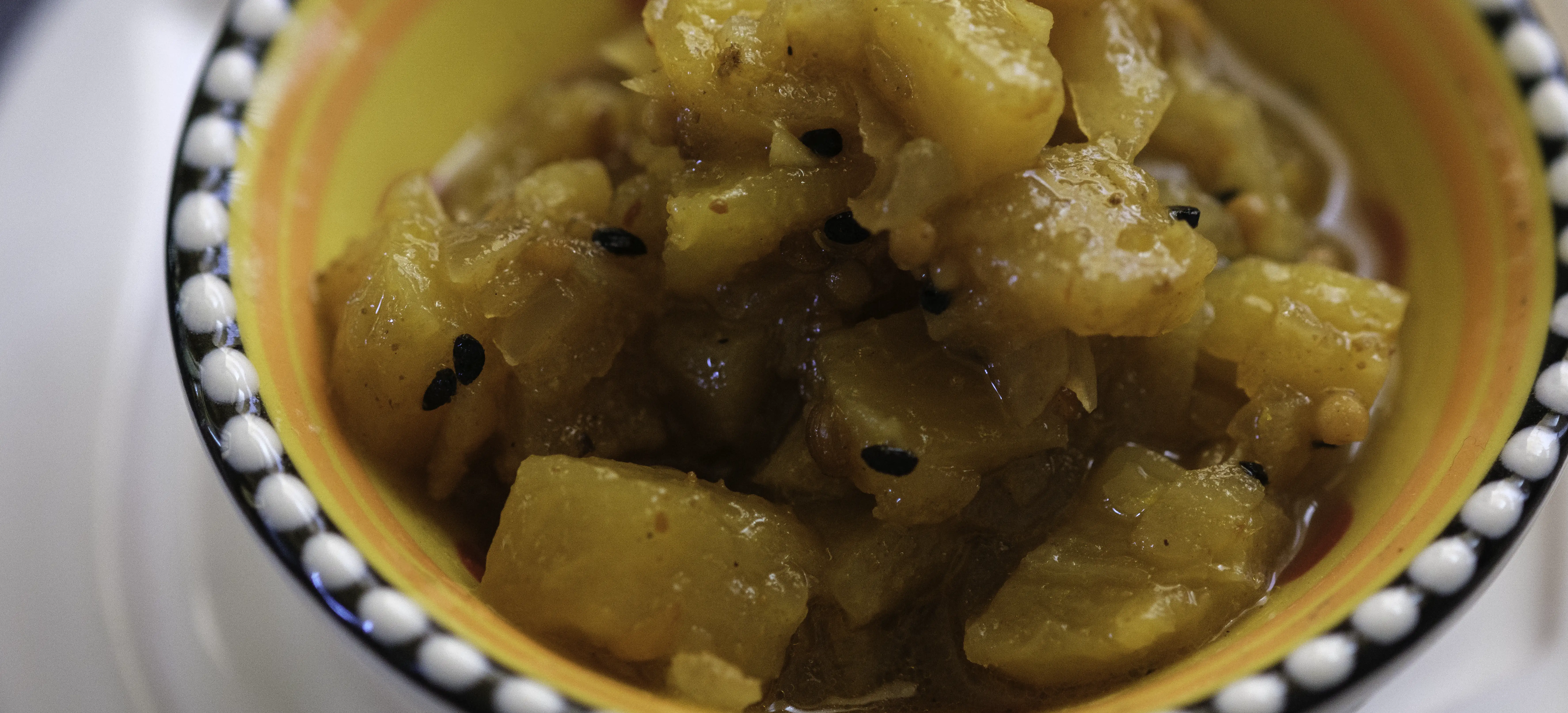
Sweet and luscious, the taste of the tropics is captured in this irresistible pineapple chutney. Flavoured up with Indian spices and a touch of nigella seeds, you’ll soon find the chutney jar empty. Select ripe but firm pineapples when they are in season and extend the taste of summer for the rest of the year. And you can ramp up its spiciness by adding more chilli flakes if you like a real palette tickler – hot sweet, tangy – such a delicious combo
- Preparation Time:
- 45 minutes
- Cooking Time:
- 60 minutes
- Quantity:
- 4 x400 ml jars
PREPARATION
Sterilise glass jars and lids with a protective lining. Have the jars and lids dry, hot and ready for the bottling stage.
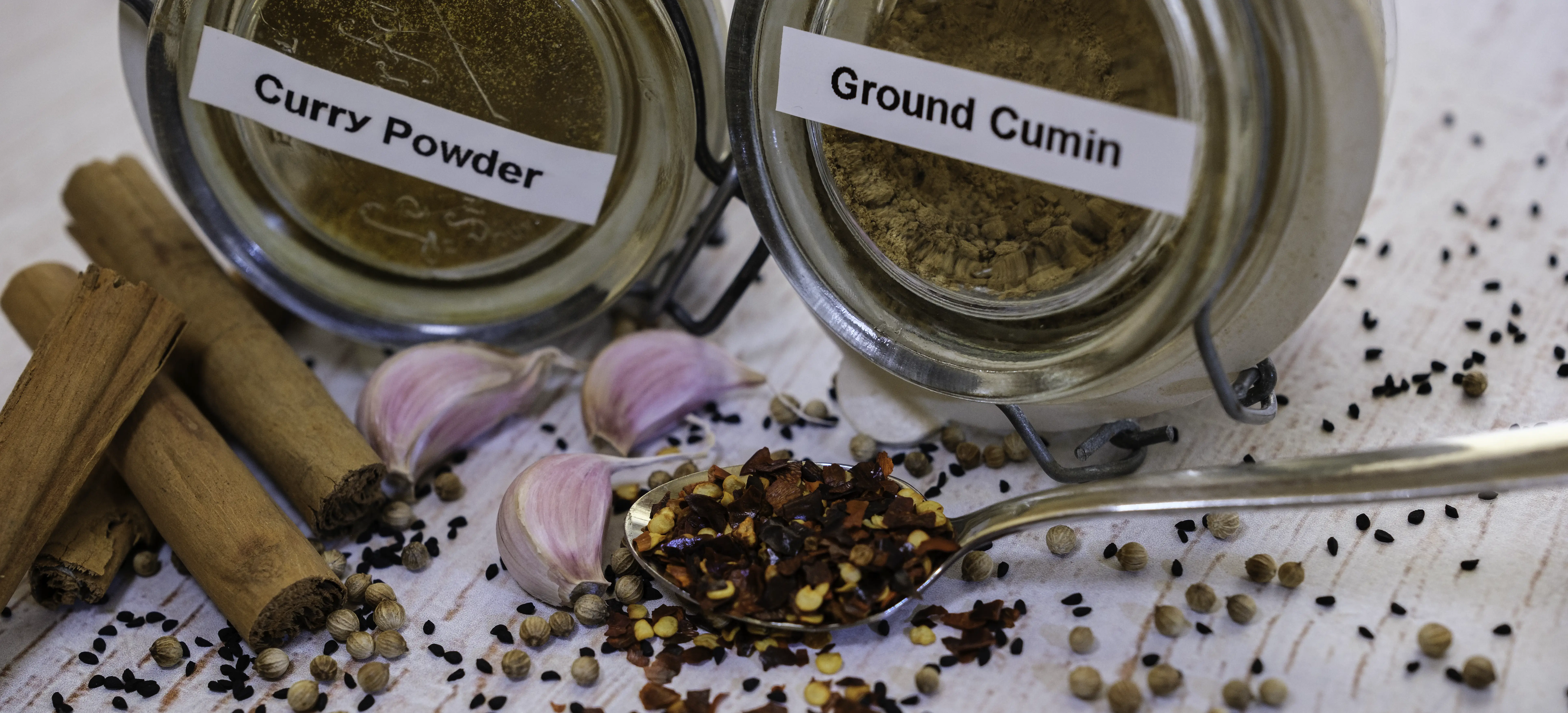
INGREDIENTS
- 2
- Brown onions, peeled, finely chopped
- 30g
- Ginger, peeled, finely chopped
- 3
- Garlic cloves, peeled, finely chopped
- 1 tablespoon
- Curry powder
- 1 tablespoon
- Cumin powder
- 1 tablespoon
- Coriander seed, crushed
- 8 cm
- Cinnamon quill,
- 1
- Cooking apple, large
- 2
- Pineapple, large, ripe
- 1/2 teaspoon
- Chilli flakes
- 1 teaspoon
- Nigella seeds
- 300 ml
- Apple cider vinegar
- 600 ml
- Water
- 100g
- Brown sugar
- 150g
- White sugar
- 60 ml
- Vegetable oil
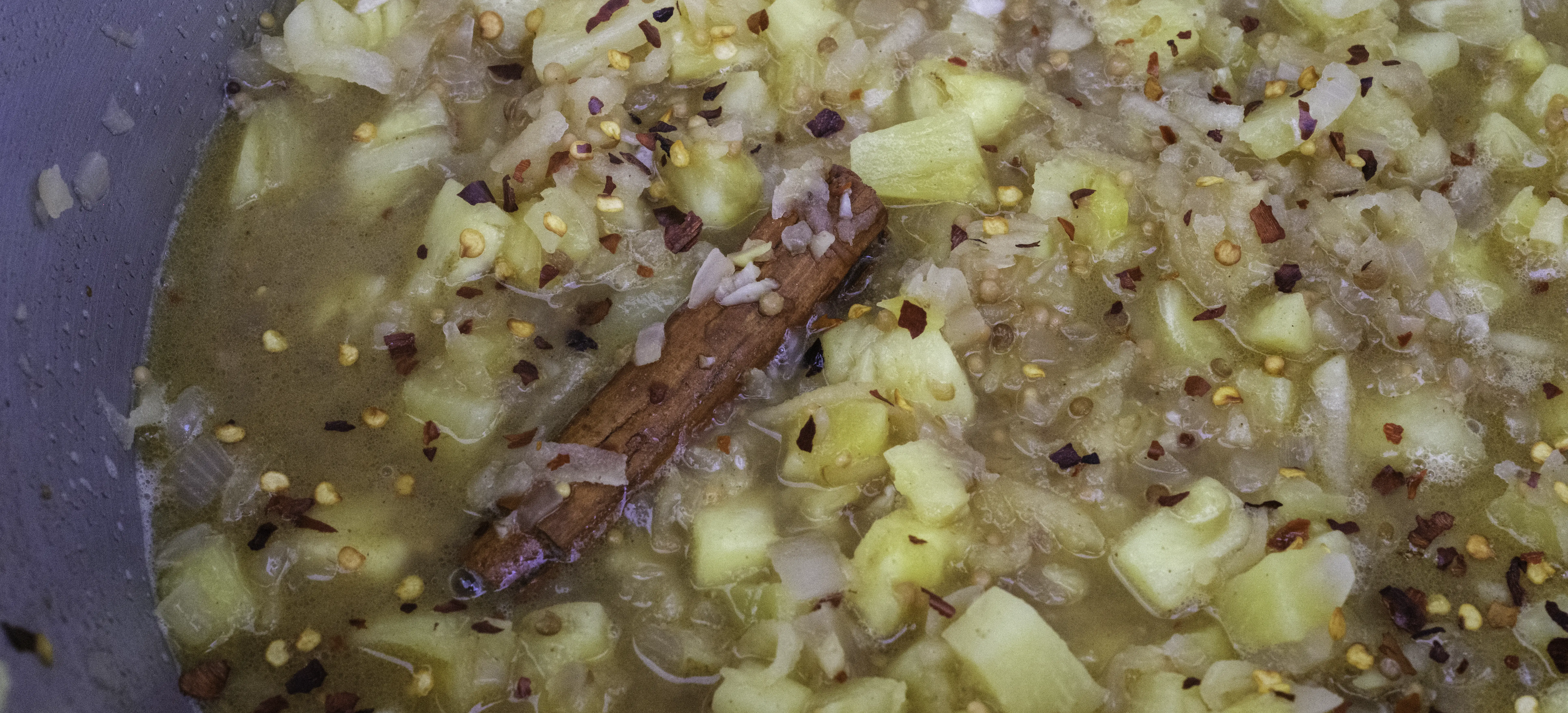
METHOD
Gently fry the prepared onion, garlic and ginger in the oil for 2-3 minutes in a stainless-steel preserving pan or a large heavy bottom stainless steel pot.
Add the curry powder, cumin powder and coriander seeds and continue to fry gently until the onion is translucent and the spices are fragrant. If the mixture becomes too dry, add a little more oil. The spices must not burn. Remove from the heat and put aside.
Peel, core and dice the pineapple and apple. Add the pineapple, apple, chilli flakes, nigella seeds, water, apple cider vinegar and sugar into the preserving pan
Detailed instructions on preparing the pineapple is provided in the Notes Section: How to Peel and Core Pineapple.
Return to the heat and simmer gently, stirring occasionally, until the sugar has dissolved. Then simmer uncovered for approximately 50 mins or until the pineapple is soft and a chutney consistency has been reached. Stir occasionally, particularly as the mixture thickens, to prevent the chutney from burning on the bottom of the pan.
Add a small amount of water during the cooking process if the liquid evaporates too quickly before the pineapple is cooked.
Use a funnel to pour into hot dry sterilised screw cap sealable bottles, fill to approximately 2.5cm (1 inch) from the top of the jar and seal with hot dry lids. This is the HHH method of sealing - a Hot preserve in a Hot jar with a Hot lid.
Allow to cool and wipe the jars down to remove any spills during the bottling stage.
Label and store in a cool dark place in the kitchen or pantry.
Allow to mature for at least 4 weeks before eating.
NOTES
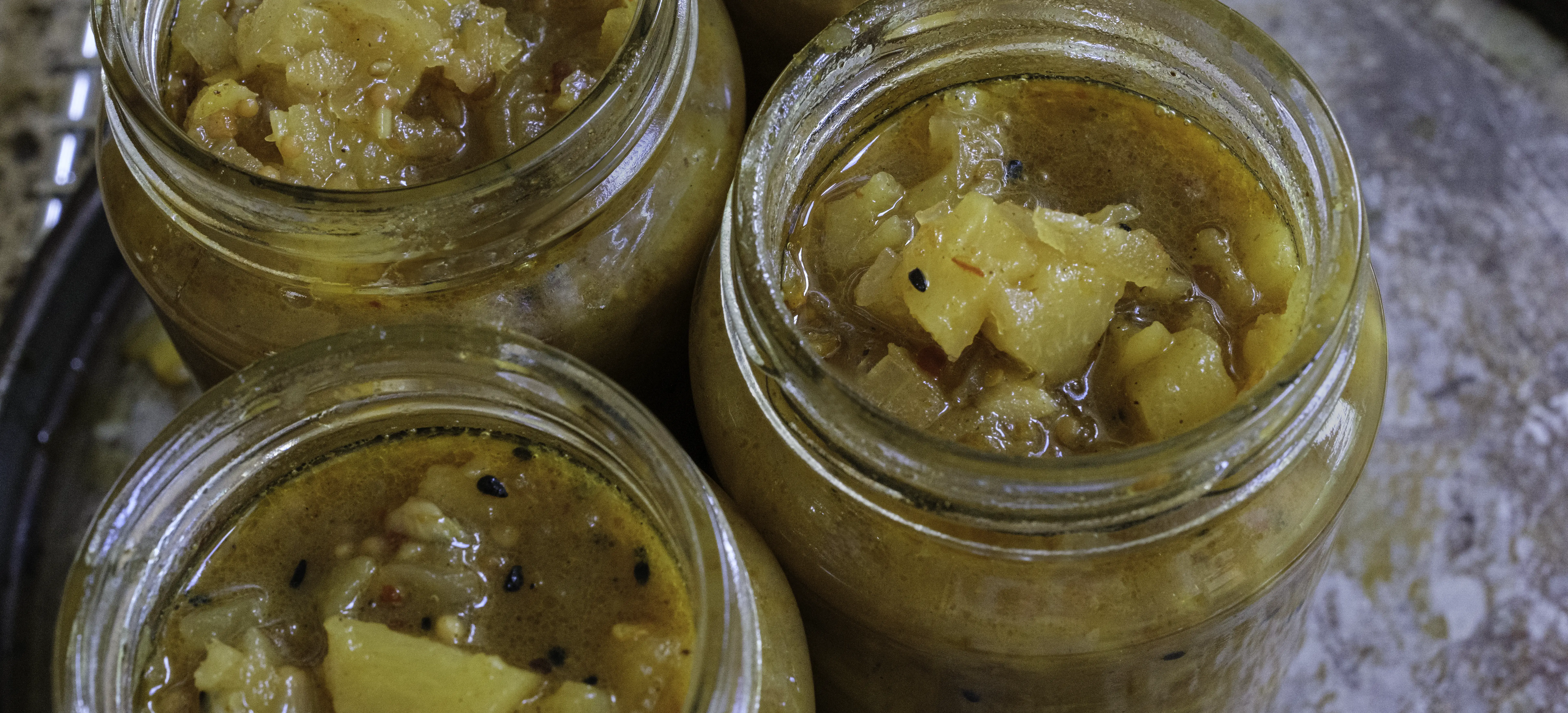
- Jars should be clean and hot with lids that are lined with a protective coating, which can withstand the corrosive action of the vinegar.
- Good quality jars should be used in all preserving, particularly when they are processed in a hot water bath. Thin jars often cannot withstand the temperatures and may crack either in the bath or/on and or/after removal. Avoid the disappointment and invest in some good jars from a homewares or preserves outlet. Select jars that have non-reactive lids as the vinegar solution can cause the lids to rust over time.
- Choose clean ripe fruit. Do not use overripe and never use mouldy fruit as this will produce a poor-quality chutney.
- How to Peel and Core Pineapple
- To prepare the pineapple, lay it on its side on a chopping board. Using a sharp chef’s knife remove the crown (leafy end) and bottom approximately 65 mm (¼ inch) from the top and bottom. Stand it up and following its curved shape slice from the top to bottom approximately 65 cm (1/4 inch) form the outside rind. Repeat around the pineapple until all the rind has been removed.
- Using a paring knife or small vegetable knife, remove any dark spots, remaining patches of rind or the brown pineapple “eyes”.
- Cut into quarters, remove the core and then coarsely dice the pineapple. Discard the outside peel, crown and bottom.
- If you want a chunkier chutney texture, cut the fruit into larger pieces. To ensure even cooking and consistency make sure they are all cut to the same size.
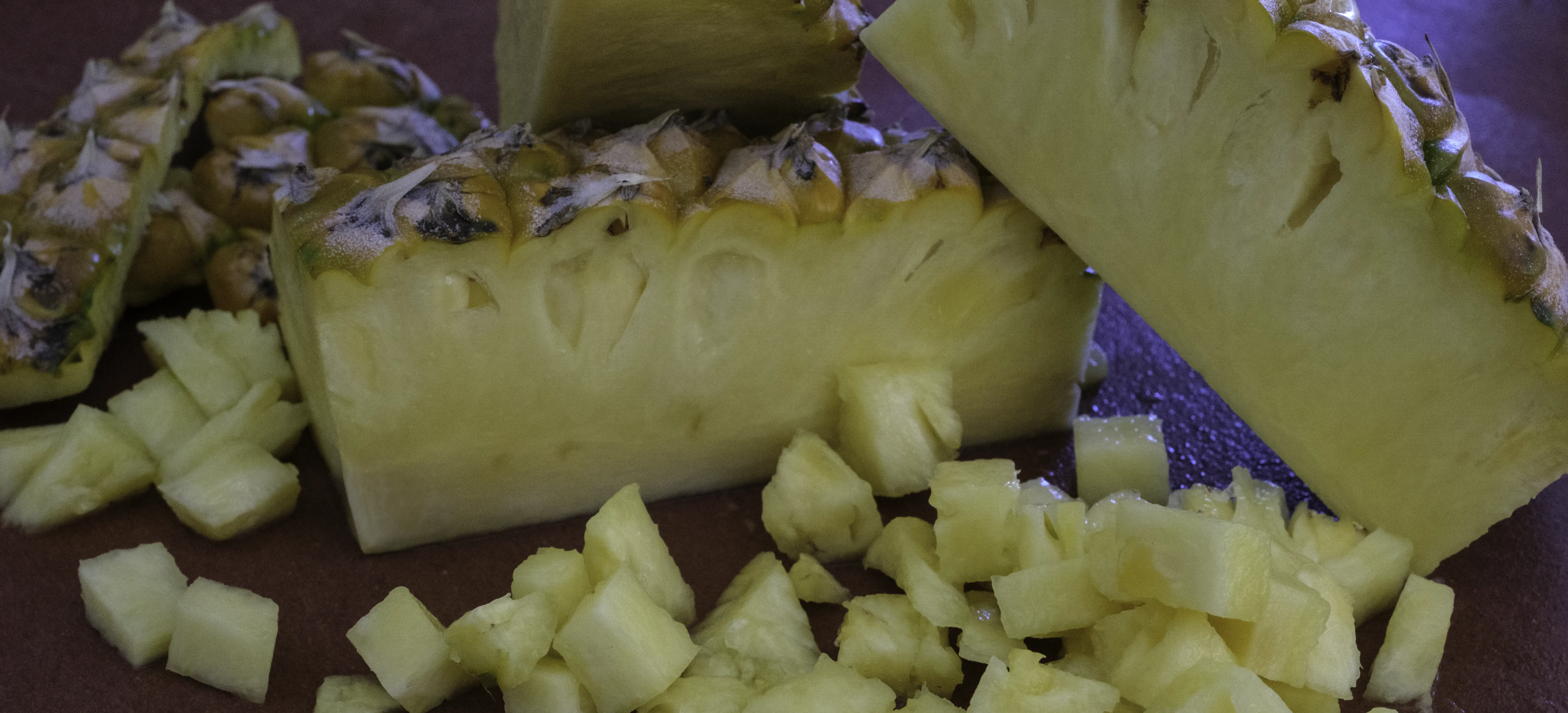
- The HHH Method
- Seal the chutney while it’s hot with hot dry lids. The HHH method of HOT dry jars, HOT dry lids and HOT preserve creates a vacuum seal as it cools.
- The “popping” sound, often heard in the kitchen, signals a successfully vacuum sealed jar.
- The HHH method of sealing is preferred as there is reduced risk of contamination prior to sealing.
- Cooking Time Approximation
- Cooking times are an approximation only and are provided as a guideline.
- Cooking time will depend upon:
- The size of preserving pan - the broader the pan the quicker the evaporation
- Degree of fruit ripeness – the riper the fruit, the sweeter and juicier the initial chutney will be
- The degree of heat when cooking – the higher the heat, the greater the boil which will produce greater evaporation.
- Types of Sugar & Vinegar
- The type and colour of the sugar and vinegar used will affect the final colour and flavour of the chutney. Malt vinegar and brown sugar will produce a dark brownish red chutney with a more earthy/molasses background flavour, while white wine or apple cider vinegar and white sugar will produce chutney that has a fresher and brighter flavour. This is a matter of personal choice.
- Take care to only use vinegar which has a 5% minimum acetic acid content. The acetic acid content acts as the principal preservative, and a lower percentage will compromise the safety of your preserves. Commercially available vinegar is 5%, however most homemade vinegars do not achieve this level.
- Chutney Consistency Test
- Spoon a little of the mixture on to a plate, the chutney should hold its shape and have a jammy consistency.
- Towards the end of the cooking process, it may be necessary to stir regularly. It is important that the fruit does not stick to the bottom of the pan and burn. Your chutney will be tainted with a burnt flavour which is not very pleasant.
- Knowing Your Spices
- Chilli (Capsicum annuum)
- It is important to wash your hands thoroughly after handling and de-seeding chillies. Chilli oil is easily transferred from the chillies to hands. If you touch your eyes or any delicate areas, the chilli oil will be transferred on contact and create a burning sensation.
- Why is chilli so hot? The legendary heat comes from a natural compound, capsaicin, which develops and is concentrated in the white pith with some migrating to the seeds. The amount of capsaicin a chilli contains depends upon the chilli variety and growing condition. High temperatures and drought can increase capsaicin production as the chilli ripens. To control and reduce the amount of heat, use the most appropriate variety and amount of chilli, remove as much or little of the white membrane and seeds and vary the length of contact time with other ingredients while cooking to suit your taste.
- Chilli heat or pungency is measured in Scoville Heat Units (SHU) which was developed in 1912. The higher the Scoville rating the hotter the chilli. The ubiquitous Jalapeno varies between 2,500 – 10,000 SHU which is mild compared to the Habanero and Scotch Bonnets 80,000 – 150,000 SHU or the hottest chilli in the world, the Carolina Reaper, which has been measured at 2million SHU! Aptly named the Reaper; use with extreme caution.
- Dried chilli develops an earthy, woody, and nutty flavour complexity that is rare among other herbs and spices. Substitute dried chilli in recipes throughout the year, make your own special chilli powder blend with dried ground cumin, garlic and oregano or grind finely to make a hot chilli powder.
- Cinnamon (Cinnamomum verum)
- Contains sweet and aromatic flavours. It does not taste sweet in itself, rather, it enhances the perception of sweetness in other ingredients. It draws out the sweet notes in savoury dishes. Cinnamaldehyde is the main flavour compound and is sensed by the temperature sensors on the tongue, giving cinnamon a warming quality.
- Cinnamon sticks keep their flavours for up to a year. Keep in an airtight container and store in a cool dark place in the pantry or kitchen. The lighter brown, thinner more fragile sticks are higher quality.
- Inner layers of bark are dried in the sun and rolled together by hand to make “quills.”
- Cinnamon and cassis are distinctly different in appearance and flavours profile.
- Cumin (Cuminum cyminum)
- Seeds are harvested from annual plants and the seeds are collected from the small, white, or pink-mauve flowers. The plants are cut down four months after planting then dried and threshed to separate the fruit, which is then dried further. The seeds are approximately 6mm long (1/4 inch) and will keep their flavour if stored in a sealed container in a cool, dark place.
- Cumin powder is also available, however, it loses its flavour and aroma quickly and should be used within a couple of months It has an earthy herby and woody pungent flavour that is distinctive. It is highly aromatic.
- Thought to be native to the Nile Valley and Eastern Mediterranean, it's cultivated in India, China, Syria, Türkiye, and Iran.
- Coriander (Coriandrum sativum)
- A versatile spice, that has a bittersweet citrusy flavour with warm, floral undertones. Grown as an annual, stalks are cut before the fruits are fully ripe. They are threshed, cleaned, and dried. The stalks and roots are also edible and used frequently in Thai cooking.
- Powder is also available but loses its aroma quickly. It can act as a thickener.
- Native to the Mediterranean and Southern Europe, it's cultivated throughout worldwide for its seeds and leaves.
- Curry powder
- Curry powder is a blend of sweet, pungent, hot and amalgamating spices. Using different combinations and proportions creates a variety of styles to suit different tastes. Amalgamating spices have the magical ability to harmonise the spice blend.
- The principal components of a Madras style curry powder include, cinnamon, allspice, nutmeg, cloves. cardamom, cumin, chili, pepper, fenugreek, fennel, coriander and turmeric.
- It’s believed the concept of a curry powder was initiated by the English colonists. On returning to England, they wanted to recreate the exotic flavours they enjoyed while serving in India.
- Curry powder should be stored in an airtight container away from extremes of heat, light and humidity. Under these conditions it should keep its flavour for 12 months.
- Garlic (Allium sativum)
- Raw garlic has a sharp acrid taste, however when cooked it takes on a sweeter flavour and is not overpowering. It has the unique ability to heighten the flavour of the ingredients it’s combined with and is indispensable in the kitchen. Interestingly though, the way garlic is prepared will affect its flavour profile.
- There are two types of garlic- hardneck and softneck. Hardnecks grow with a stem that comes from the centre of the bulb and when harvested and cured, the stem becomes rigid and easily identifiable when pulling the cloves off. Softnecks have leaves rather than a central stalk and no rigid stem in the middle of the bulb.
- Fresh garlic should be stored in loose netting or basket in a cool, dry, and well-ventilated place. Do not store in a paper bag. Garlic’s flavour, pungency and moisture content will deteriorate over time.
- Dried garlic and garlic powder is available and should be stored in an airtight container.
- Ginger (Zingiber officinale)
- Ginger has a hot-spice, citrusy woody taste. It’s available as a fresh underground stem, a rhizome, as a finely ground powder and preserved in sugar. The dried and preserved version is used in baking, dried is also used in spice blends whereas fresh ginger is used widely in Asian cuisine.
- Do not substitute dried ginger for fresh, when specified in a recipe, as the dried form has a stronger and more aromatic flavour.
- When purchasing fresh ginger, avoid older rhizomes with signs of shrivelling as the plant is drying out and the flesh can be fibrous.
- Nigella Seeds (Nigella sativa)
- Nigella is native to western Asia and southern Europe, however it now profusely grows in Egypt, the Middle east and India. Seeds were found in Tutankhamun’s tomb in ancient Egypt and have been cultivated for more than 3,000 years.
- Large seed capsules are harvested annually. Whole seeds, jet-black angular and tear-shaped, are very hard and difficult to grind by hand. A clean coffee or spice grinder is a much easier method.
- It has a punchy, earthy, onion-like flavour and is widely used in Indian cooking.
- Chilli (Capsicum annuum)
